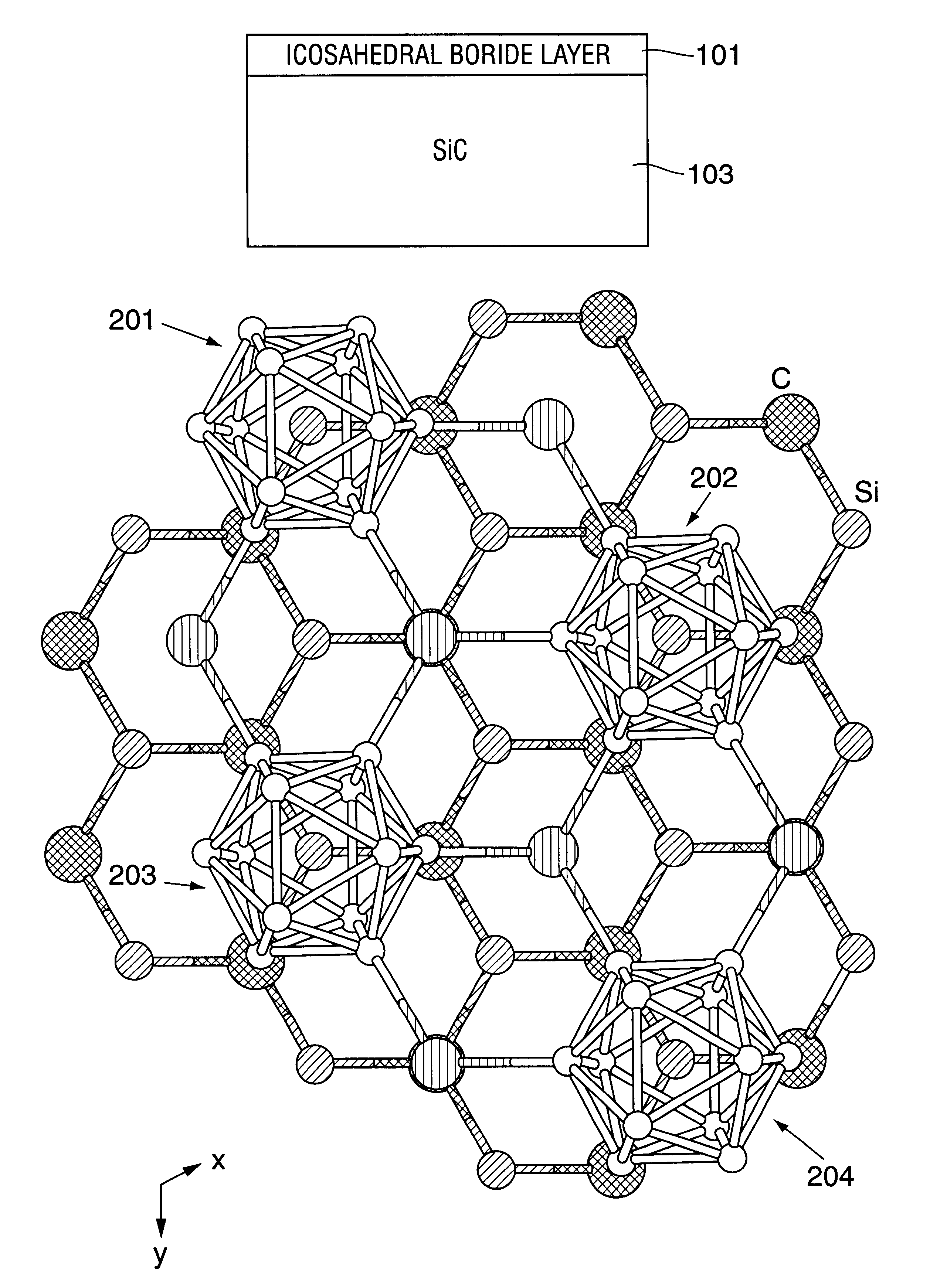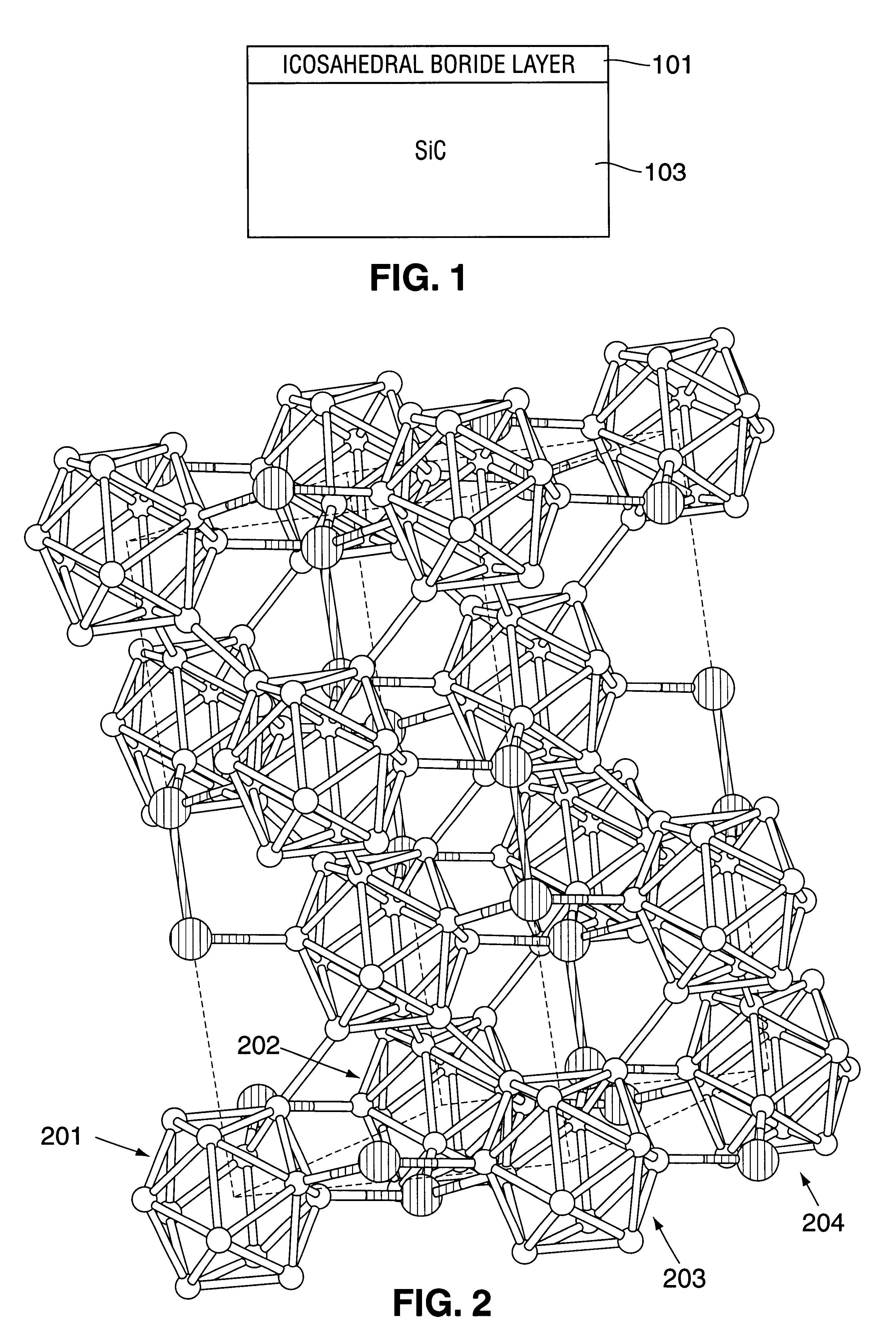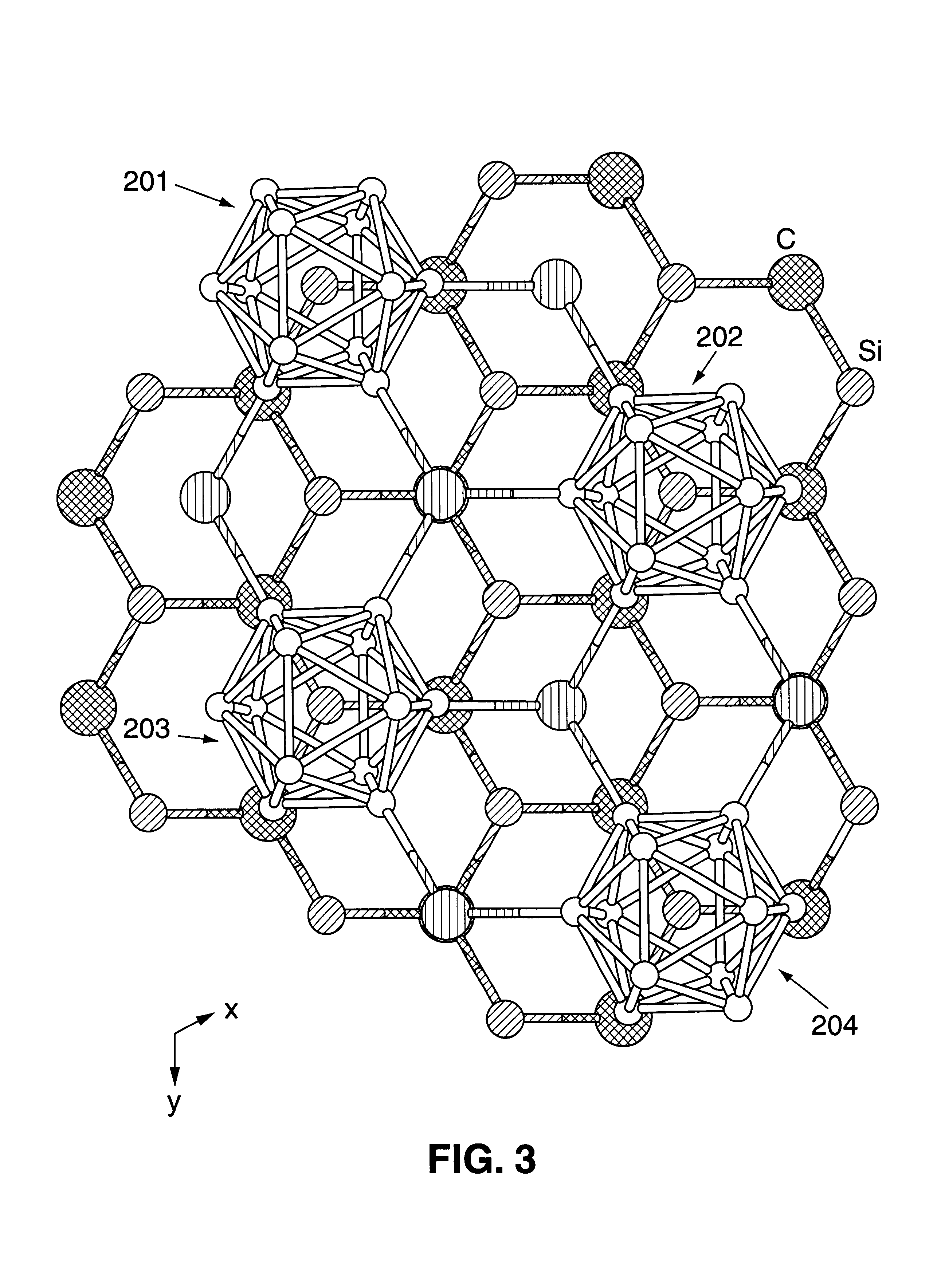Method of making an icosahedral boride structure
a technology of icosahedral boride and structure, applied in the field of icosahedral boride, to achieve the effect of improving film crystallinity and lowering impurity concentrations
- Summary
- Abstract
- Description
- Claims
- Application Information
AI Technical Summary
Benefits of technology
Problems solved by technology
Method used
Image
Examples
examples
[0030]B12As2 films were deposited on 6H and 3.5° off 6H—SiC substrates in an RF-heated, horizontal-geometry CVD reactor. The SiC substrates were approximately 300 μm thick and were n-type with a bulk resistivity of approximately 0.1 Ω-cm. The substrates were degreased and then dried under nitrogen gas before being loaded into the CVD reactor. CVD films were grown using dilute sources of diborane (1% B2H6 in H2) and arsine (1% AsH3 in H2), which provided boron and arsenic respectively. The flow rates for each of the source gases was 50 sccm with a hydrogen carrier gas flow rate of 5 slm. In order to obtain crystalline films, the deposition temperature should be above 1050° C., preferably in the range of 1100° C. to 1400° C., and more preferably approximately 1150° C. At a deposition temperature of 1150° C. and a pressure of 100 torr, a B12As2 growth rate of 0.2 μm / hr was achieved.
[0031]X-ray diffraction patterns were measured for the films grown on both the on-axis SiC and 3.5 degree...
PUM
| Property | Measurement | Unit |
|---|---|---|
| temperature | aaaaa | aaaaa |
| temperature | aaaaa | aaaaa |
| temperature | aaaaa | aaaaa |
Abstract
Description
Claims
Application Information
 Login to View More
Login to View More - R&D
- Intellectual Property
- Life Sciences
- Materials
- Tech Scout
- Unparalleled Data Quality
- Higher Quality Content
- 60% Fewer Hallucinations
Browse by: Latest US Patents, China's latest patents, Technical Efficacy Thesaurus, Application Domain, Technology Topic, Popular Technical Reports.
© 2025 PatSnap. All rights reserved.Legal|Privacy policy|Modern Slavery Act Transparency Statement|Sitemap|About US| Contact US: help@patsnap.com



